Sacred Chickens
Menu
SACRED CHICKENS
 Pale apricot rose with green leaves - photo by JPC Pale apricot rose with green leaves - photo by JPC The Unlovable Garden by Julie Carpenter I have had and loved many gardens, from my very first back yard in Memphis, where my boxer dug up the plum trees and ate half my climbing roses, to the haunted hillbilly house where we didn’t need curtains in spring because the wisteria draped itself in billows from the big oak tree out front. But I had one garden that, if I’m being honest, was hard to love.
1 Comment
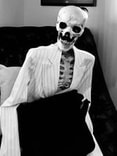 Are We the Baddies? by Julie Carpenter This blog post is an older one, but I've been thinking a lot about narrative and empathy lately. In fact, Jarad, Morty, and I are thinking about doing a series of posts about the intersection of narrative, literature, politics and reality in general. So I decided to repost.
I wrote my master’s thesis on the use of narrative as an argumentative device. I believed then, and still believe, that stories are the best way to convince someone else of your truth, the best way to come to any idea at all of what the truth might be. Stories add layers of complexity. Narrative allows us to see that every person has choices to make but at the same time they are victims of the choices of other individuals, families, and societies, or even the natural world. Story embraces the paradox of life. Many things can be true at once when you see them in a narrative context. Life is messy and much more like a web than straight line. Stories create empathy and acceptance. Teaching your child to read, especially stories that are written with the perspective of a particular character or characters in mind, not only promotes academic success, but also empathy.  Writers Are Kinda Crazy by Jarad Johnson Writers are, as a general rule, a strange bunch. It takes someone who’s at least a little strange to concoct wild fantasies and make up stories. I found myself having a conversation with…myself. Debating with myself about whether or not to include a storyline in a piece I’m writing. I’m not sure if me, myself or I won that argument, but it did make me think about what a writer was. Ooohhhhh, self-reflection, I say to myself, so philosophical you are, young padawan. Shut up, you’re insufferable, I say, also to myself. And so on and so forth.
 Digging In: Fairy Tale Witches- Part Two by Jarad Johnson Witchcraft and witches are a motif across many literary and cultural themes, so it’s only fitting that they appear in fairy tales as reflections of the culture they come from. Although the fantasy genre has many different variations on the witch, when they pop up in fairy tales, they’re usually up to no good. Baking and eating small children and handing out poison apples. But witches have changed a little over time. Let’s look at some of these stories from long ago and their modern counterparts to see what it tells us about culture and women’s roles and exactly how witches got to be so wicked - at least in the eyes of those who told these stories. (Remember, this is a look into how western culture came to portray witches as evil! It does not reflect the feelings of any of us at sacred chickens about the long history of herb women, witches, or anyone who currently professes paganism or practices holistic medicine.)
Last time we explored how Fairy Tale Witches got to be wicked. The evil witch in the fairy tale reflected how the surrounding culture felt about women, especially women with power or childless women. These conflicted feelings created the monstrous image of the anti-mother, a twisted reflection of the only role women could be conceived of having. The witch motif, like fairy tales themselves, has changed with onset of fairy tale retellings. In understanding the entire perspective of the witch motif, retellings provide a new facet in that area. The retellings this paper will cover are, “When the Clock Strikes,” and, “Snow, Glass Apples.” Each of these stories contain a witch, but unlike the traditional tale, the witch has depth of character and is an overall more rounded out character than she would usually be. 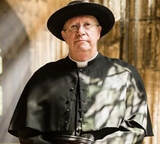 Photo courtesy of BBC Photo courtesy of BBC Review of Father Brown Season 8 by Julie and Jarad Introduction: Julie got hooked on this series when she had dental surgery last year and passed the obsession onto Jarad – even Morty, that cantankerous old soul, sneaks in a viewing now and then. You may be thinking…hmmm…recommendations from people who are loopy from anesthesia and pain meds. For the record, she went for local anesthesia and laughing gas and she can’t take opioids so she was in about as right a mind as she ever manages on an average day. But it is true that, as you might suspect, the show is along the lines of comfort food. Like your grandmother’s mashed potatoes and mac and cheese (or Mrs. McCarthy’s award winning strawberry scones…you haven’t met her yet, but you should.)
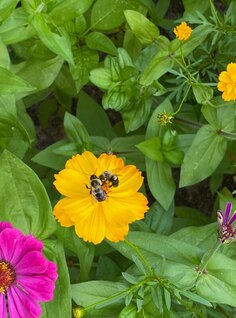 The Herbalist and The Bee by Jarad Johnson When I was very young, I played soccer. I didn’t particularly enjoy it, but I did enjoy kicking up clods of dirt and chasing butterflies while the other players actually tried to win the game. If you can’t tell, sports are not my natural form of expression. Uniforms, arbitrary rules, and running? No thanks. Also, my aim is terrible.
So, instead of paying attention I was constantly being lured away by the delights of nature. On one of my excursions chasing after a butterfly, I got stung by a bee. I’m sure that this did nothing to further endear me to my teammates. I was five. I was and am not afraid to loudly proclaim my pain to the world, so there was lots of screaming and crying. And wailing. Well, I’ve always been a bit dramatic so imagine me with a bee sting.  How Witches Got To Be Wicked by Jarad Johnson Witchcraft and witches are a motif across many literary and cultural themes, so it’s only fitting that they appear in fairy tales as reflections of the culture they come from. Although the fantasy genre has many different variations on the witch, when they pop up in fairy tales, they’re usually up to no good. Baking and eating small children and handing out poison apples. But witches have changed a little over time. Let’s look at some of these stories from long ago and their modern counterparts to see what it tells us about culture and women’s roles and exactly how witches got to be so wicked - at least in the eyes of those who told these stories. (Remember, this is a look into how western culture came to portray witches as evil! It does not reflect the feelings of any of us at sacred chickens about the long history of herb women, witches, or anyone who currently professes paganism or practices holistic medicine.)
 Random Thoughts: Haunting Myself by Julie Carpenter Lately I’ve been having some odd experiences with time. So, this going to be an odd, drifting sort of blog post. I like that the topic of the piece is also my excuse for the disorganization of my thoughts. I don’t know where to start, so I will start with a dream I had about eternity. (Yes, my subconscious is an odd place.)
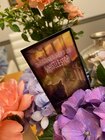 Diving Into Whistlestop- The Bite by Jarad Johnson If you don’t know by now, Julie published a book! It’s called Things Get Weird in Whistlestop, and I reviewed it recently. I just re-read it (quarantine…I have time on my hands), and there are some stories in there that I want to get into a little deeper. The first I’m going to talk about is The Bite, a story about a woman who encounters a fairy while spraying her roses, and it ends rather badly for her – depending on your point of view.
From here on out, there will be spoilers so if you haven’t read the book, you may want to do that first.  Digging In Happily Ever After by Jarad Johnson The Disney versions of the classic fairy tales are the ones that my generation, and a few before me, grew up with. They’re the ones that we are familiar with, and unless we actually take the time to read the original (a term used loosely here) then we are never aware that older fairy tales can be quite dark. Often there is no “happily ever after” as Disney would have us believe. If you read the Grimm’s versions of fairy tales (and these were collections of earlier and often even darker tales), they are usually quite…grim. It’s kind of in the name. These folk stories were not always about happy endings, or even about love.
|
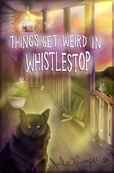
Click Photo above to buy ebook or paperback from Amazon.
Here's the link to Barnes and Noble Or order through your favorite independent bookstore! Categories
All
|
 RSS Feed
RSS Feed